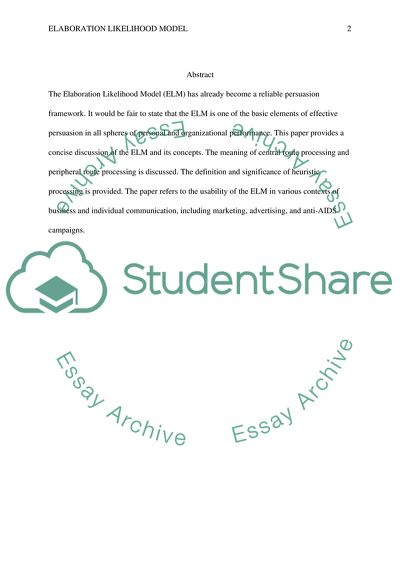Cite this document
(Elaboration Likelihood Model Assignment Example | Topics and Well Written Essays - 1250 words, n.d.)
Elaboration Likelihood Model Assignment Example | Topics and Well Written Essays - 1250 words. https://studentshare.org/psychology/1571617-social-psychology-outline-and-discuss-the-main-features-of-elm
Elaboration Likelihood Model Assignment Example | Topics and Well Written Essays - 1250 words. https://studentshare.org/psychology/1571617-social-psychology-outline-and-discuss-the-main-features-of-elm
(Elaboration Likelihood Model Assignment Example | Topics and Well Written Essays - 1250 Words)
Elaboration Likelihood Model Assignment Example | Topics and Well Written Essays - 1250 Words. https://studentshare.org/psychology/1571617-social-psychology-outline-and-discuss-the-main-features-of-elm.
Elaboration Likelihood Model Assignment Example | Topics and Well Written Essays - 1250 Words. https://studentshare.org/psychology/1571617-social-psychology-outline-and-discuss-the-main-features-of-elm.
“Elaboration Likelihood Model Assignment Example | Topics and Well Written Essays - 1250 Words”. https://studentshare.org/psychology/1571617-social-psychology-outline-and-discuss-the-main-features-of-elm.


